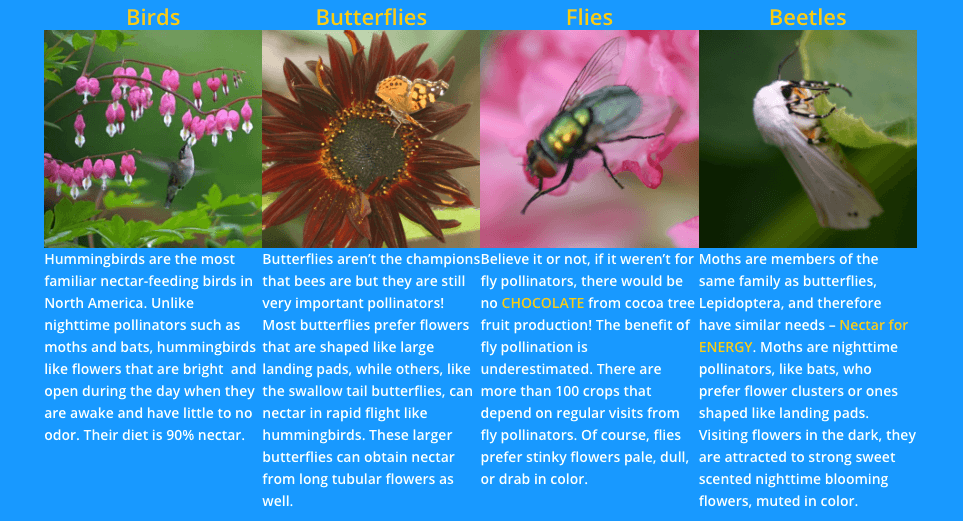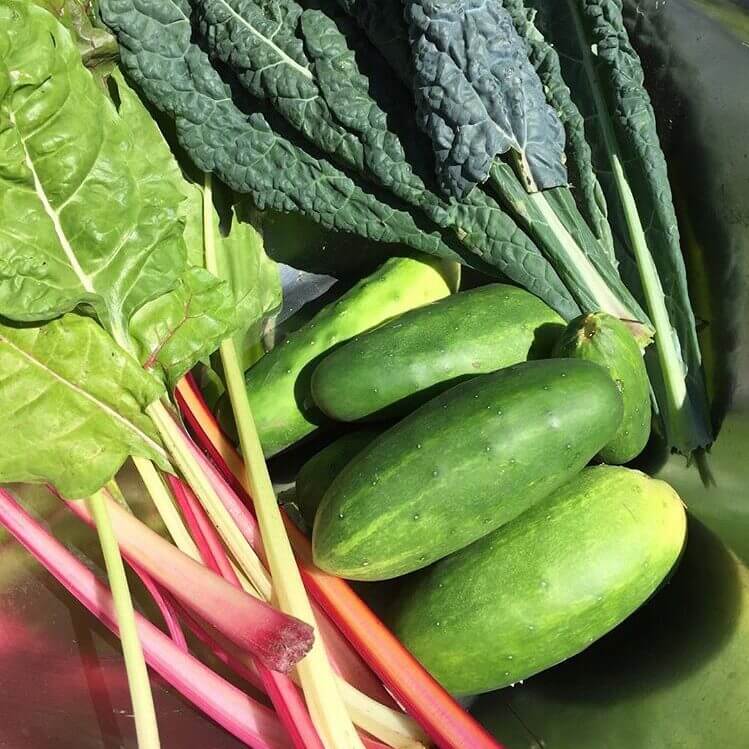Pollinators come in all shapes and sizes. Most often we think of insects like bees, butterflies, moths, flies and beetles as pollinators when we see them on flowering plants. Birds and mammals can also help as plant pollinators. While inside the flower, the pollinator gathers pollen from the stamen, the male portion, and transfers it to the pistil, the female part. It is believed one third of the world’s food supply is produced through pollination. Thanks to our pollinators we have gardens full of flowers, and fruit trees and bushes full of favorite fruits, and vegetable gardens teeming with the veggies we love to eat!
Some fruits and vegetables like tomatoes, peppers, beans, eggplant, and corn do not need pollinators. They can self-pollinate or are aided by the wind. Even carrots, potatoes, lettuce and broccoli can grow without pollinators. BUT if you love your fruit like watermelon, pears, plums, pumpkins, blueberries, raspberries, and apples, you will need to thank a pollinator! And what is a fresh salad of lettuce, tomatoes, and carrots without CUCUMBERS. Cucumbers and squash are also among the vegetables that need the help of pollinators. During your next meal take a moment to think about and thank a pollinator!
Stop by our gardens and take a look at the tomatoes and potatoes in MHHM’s teaching beds, and see how many pollinators you can spot.
Resources:
Visit kidsgrowingstrong.org to learn about pollinators and pollinatorlive.pwnet.org for free, family activities.


Topic: Celebrating Holidays
Age / Level: Primary, Elementary
